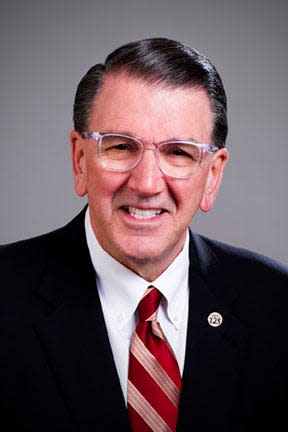Wendler commentary: Size matters
In 1976, at Louisiana State University in Baton Rouge, a young man came into my office with significant concerns. He was from a small town on Bayou Lafourche in Lafourche Parish, Louisiana. It was not far from Houma and Thibodaux, located in the deep reaches of South Louisiana, sometimes called Cajun country. Settlements perched on the edge of L'Acadiane where dry land and water are about equal, as are French (being what it is in this remarkable part of the world) and English.
This young man had a problem. He had started school just a month before and was deeply troubled. He felt like he was not fitting in. Being a recent immigrant myself to Louisiana from Berkeley, California; College Station, Texas; and the North Shore of Long Island in New York, in that order, I understood this struggle as a damn Yankee. I reflected as I listened to this sincerely troubled gentleman about the cultural differences I, only a few years his senior, also was experiencing. His trials, I recognized, were roughly the same vexations as mine. He told me his history class had more people than his hometown. I laughed unintentionally. I said, “Joey, when you can state the problem with that clarity, you will overcome it.”

We interacted many times after that first meeting. I continued to be his adviser for five years, and we developed a personal relationship. In fact, in 1981, my last year at LSU, he graduated with a five-year bachelor’s degree in architecture. I shook his hand while he held his diploma in the other. I have not seen him in nearly a half-century. We smiled at each other with genuine tenderness and real sincerity, which develops between a faculty member and a student, one person at a time, through intentional interaction. I think we had both adjusted to LSU. In his case, its’ size, in mine, a cultural variety that I had never experienced. I eventually came to appreciate south Louisiana deeply.
Size matters, to be sure. With large universities growing and smaller universities struggling to survive, size matters. Typically, larger universities are located in metropolitan areas, although that is not necessarily the case with some great land grant institutions. In contrast, many smaller or midsize universities serving 5,000 to 15,000 students are often located in towns where strong town-gown relationships provide a very special experience in the best situations. I believe Canyon, Texas, home to West Texas A&M University, is such a place. Often, smaller universities have smaller class sizes, with faculty committed to teaching and intentional interaction.
Standing in a semicircle of a dozen relatively new WT students a couple of years ago, I asked them how many had the cell phone number of at least one of their faculty members. In response, everyone raised their hand. When I asked how many had the cell phone numbers of all their faculty members, about half the group raised their hand. Smaller campuses may provide greater opportunities for human interaction. That human interaction, in my experience, can help breed student success. It’s not guaranteed, but a smaller size with focused interaction might be more fertile soil for personal relationships. The idea of closeness between students, engaged discussions, personalized teaching, intentional group work and increased flexibility is fabricated from nothing but small university experiences. And, not all of the small schools are located in the country, nor are they hidden gems. Caltech, MIT, Harvey Mudd College and many other institutions feature a level of academic intensity coupled with a small size that provides remarkable opportunities.
Larger universities — typically more than 15,000 students, some approaching 100,000 students — provide a wider array of social engagements, bigger events, intense intercollegiate athletics and more scholarship opportunities.
Interestingly, some studies demonstrate that online classes with smaller, more targeted interest groups within the classes might simulate the benefits of small class-size instruction. And there are some. Heightened interaction is one. In the generation of learners who are recent high school graduates, virtual interaction is sometimes preferred over face-to-face interaction. From the faculty standpoint, it is common for teachers to believe that smaller classrooms provide a greater opportunity for positive interpersonal relationships, even when offered online.
Much of the strength of small or large colleges depends on the student's views and how they engage in various learning prospects. Joey proved the point. One size does not fit all. At WT, we believe that our student population of slightly less than 10,000 students provides an engaging range of academic and social exposures adaptable to various aspirations and expectations. With the added benefit of structured, frequent and intentional relationships with faculty and staff. My advice? Look carefully at any institution and try to gather a sense of fit, challenges and opportunities presented for learning, growth and eventually engaged citizenship and economic contribution.
I don’t want to brag, but WT may be the perfect size.
Walter V. Wendler is President of West Texas A&M University. His weekly columns, with hyperlinks, are available at https://walterwendler.com/
This article originally appeared on Amarillo Globe-News: Wendler commentary: Size matters
